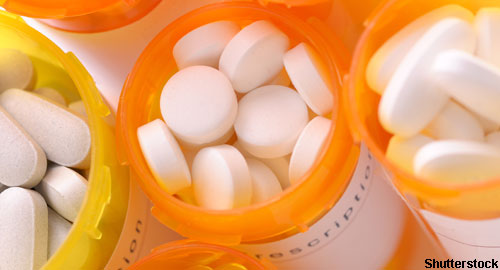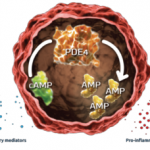 A recent study examined the long-term efficacy and safety of apremilast monotherapy in disease-modifying anti-rheumatic drug (DMARD) naive patients with active psoriatic arthritis (PsA).1 During this five-year study, patients from the phase 3 PALACE-4 study were randomized 1:1:1 to receive placebo, 30 mg apremilast twice daily or 20 mg apremilast twice daily.
A recent study examined the long-term efficacy and safety of apremilast monotherapy in disease-modifying anti-rheumatic drug (DMARD) naive patients with active psoriatic arthritis (PsA).1 During this five-year study, patients from the phase 3 PALACE-4 study were randomized 1:1:1 to receive placebo, 30 mg apremilast twice daily or 20 mg apremilast twice daily.
At Week 16, patients were eligible for early escape. Placebo patients were randomized to receive apremilast treatment, while apremilast patients remained on their assigned dose. At Week 24, all patients still receiving placebo were randomized to receive apremilast. Double-blind treatment continued through Week 52, with open-label apremilast treatment continuing for up to an additional four years. Among the three study groups, 527 patients were evenly randomized.
In the group treated with 30 mg of apremilast, 58%, 30% and 16% of patients, respectively, obtained modified ACR20, ACR50 and ACR70 responses at Week 52. Of all the patients treated with 30 mg of apremilast randomized, 46% completed the Week 260 visit (Year 5). When apremilast was continued, improvement rates of PsA signs and symptoms and physical function were maintained up to Week 260. Swollen joint count rates were reduced by 85%, and tender joint count rates were reduced by 76%. Additionally, 66%, 39% and 20% of patients treated with 30 mg of apremilast achieved ACR20, 50 and 70, respectively, at Week 260.
Of patients treated with 30 mg of apremilast who had baseline enthesitis, 71% obtained a Maastricht Ankylosing Spondylitis Enthesitis Score (MASES) of zero. This score is used to measure enthesitis in patients with ankylosing spondylitis, other spondylarthritides and PsA. Additionally, 95% of patients with baseline dactylitis obtained a joint count of zero at Week 260. HAQ-DI MCID ≥0.35, PASI-50 and PASI-75 responses were realized by 53%, 60% and 48%, respectively, in patients treated with 30 mg of apremilast at Week 260.
The most common adverse effect was nasopharyngitis (7%). Serious AEs occurred in five patients treated with 30 mg apremilast subjects, and serious infections were reported in two subjects patients treated with 30 mg apremilast (pelvic abscess and ESBL bacterial urinary tract infection requiring intravenous antibiotics).2 No opportunistic infections were reported during study Weeks 208–260, and no new safety signals were identified. In this study, use of 30 mg apremilast twice daily was well tolerated and had sustained improvements in PsA patients over the five-year study period.
Michele B. Kaufman, PharmD, BCGP, is a freelance medical writer based in New York City and a pharmacist at New York Presbyterian Lower Manhattan Hospital.


